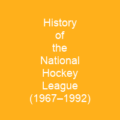The Evolution of the NBA G League: A Farm System for Basketball Talent
Imagine a world where young basketball talents are nurtured like crops in a fertile field, ready to be harvested when they reach their prime. That’s exactly what the NBA G League has become—a minor league organization that serves as the NBA’s farm system for developing players. Founded in 2001 under the name National Basketball Development League (NBDL), it has undergone several transformations, including a name change to the NBA Development League (NBA D-League) and finally to its current moniker, the NBA G League.
Back in 2001, when the league was just eight teams strong, it was a small but promising venture. The Greenville Groove won the inaugural championship that year, setting the stage for what would become a dynamic and evolving landscape of basketball talent development.
The Growth Spurt
By 2005, the league had grown to include more teams across the United States. This expansion was part of NBA commissioner David Stern’s vision to create a true minor-league farm system. The league continued to grow significantly between 2006 and 2009, adding new teams in California and other western states.
However, this rapid growth also led to some contraction as the league managed its expansion carefully. By 2017, after a deal with Gatorade, it received its current name and continued to evolve into an important stepping stone for NBA players.
A New Era
In 2009, Houston Rockets and Rio Grande Valley Vipers pioneered the single-affiliate partnership model. This hybrid approach became more common as teams like Toronto Raptors created their own expansion franchises. Today, the league consists of 31 teams, each with its unique ownership models and NBA affiliations.
Ownership varies widely; some teams are owned directly by parent clubs, while others operate under single-affiliate partnerships. For instance, the Lakeland Magic (formerly Erie BayHawks) is owned by the Orlando Magic, while the Agua Caliente Clippers (San Diego Clippers) is a single-affiliate partnership with the Los Angeles Clippers.
Key Players and Contracts
The G League offers select contracts to players not yet eligible for the NBA draft. In 2020, it launched its prospects team, the NBA G League Ignite, which has become a crucial part of the development process.
Rosters typically consist of 12 players, including 10 G League players and 2 NBA players. The minimum age to play is 18, ensuring that only mature talents participate in this developmental league.
Scouting and Showcase
The NBA G League Showcase, a scouting event for NBA general managers and scouts, has evolved into a four-day event with each team playing two games. It was held in various locations from 2005 to 2017 before moving to the Mandalay Bay Resort and Casino on the Las Vegas Strip.
In 2018, it was replaced by a game between G League all-stars and the Mexico national team. The Rising Stars Challenge, which features select G League players alongside NBA rookie and sophomore players, began in 2022, further cementing the league’s role in player development.
Notable Call-Ups
The success of the G League is evident in its call-ups to the NBA. Notable players like Bobby Simmons, Aaron Brooks, Pascal Siakam, Khris Middleton, Jeremy Lin, and Danny Green have made their way up through the ranks. Mike Taylor was the first player from the D-League drafted by an NBA team, while P.J. Hairston and Thanasis Antetokounmpo became the first two players to be drafted in the first round.
Conclusion
The NBA G League has come a long way since its inception in 2001. From eight teams to 31, it has become an integral part of the NBA’s minor-league system, nurturing and developing some of the best talents in basketball. As it continues to evolve, one thing remains clear: this farm system is not just about preparing players for the big leagues; it’s also about giving them a chance to shine on their own terms.

You want to know more about NBA G League?
This page is based on the article NBA G League published in Wikipedia (retrieved on December 13, 2024) and was automatically summarized using artificial intelligence.







